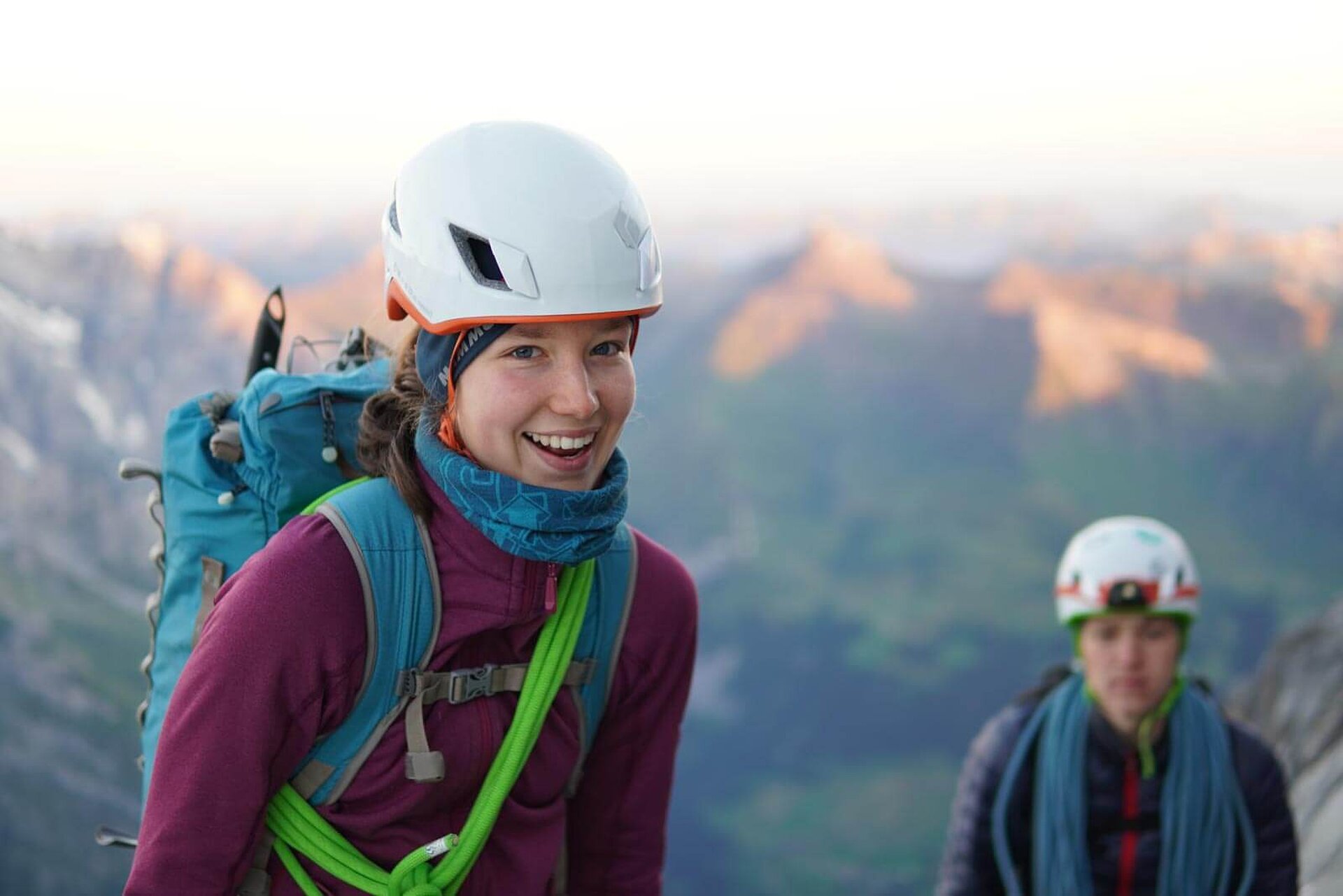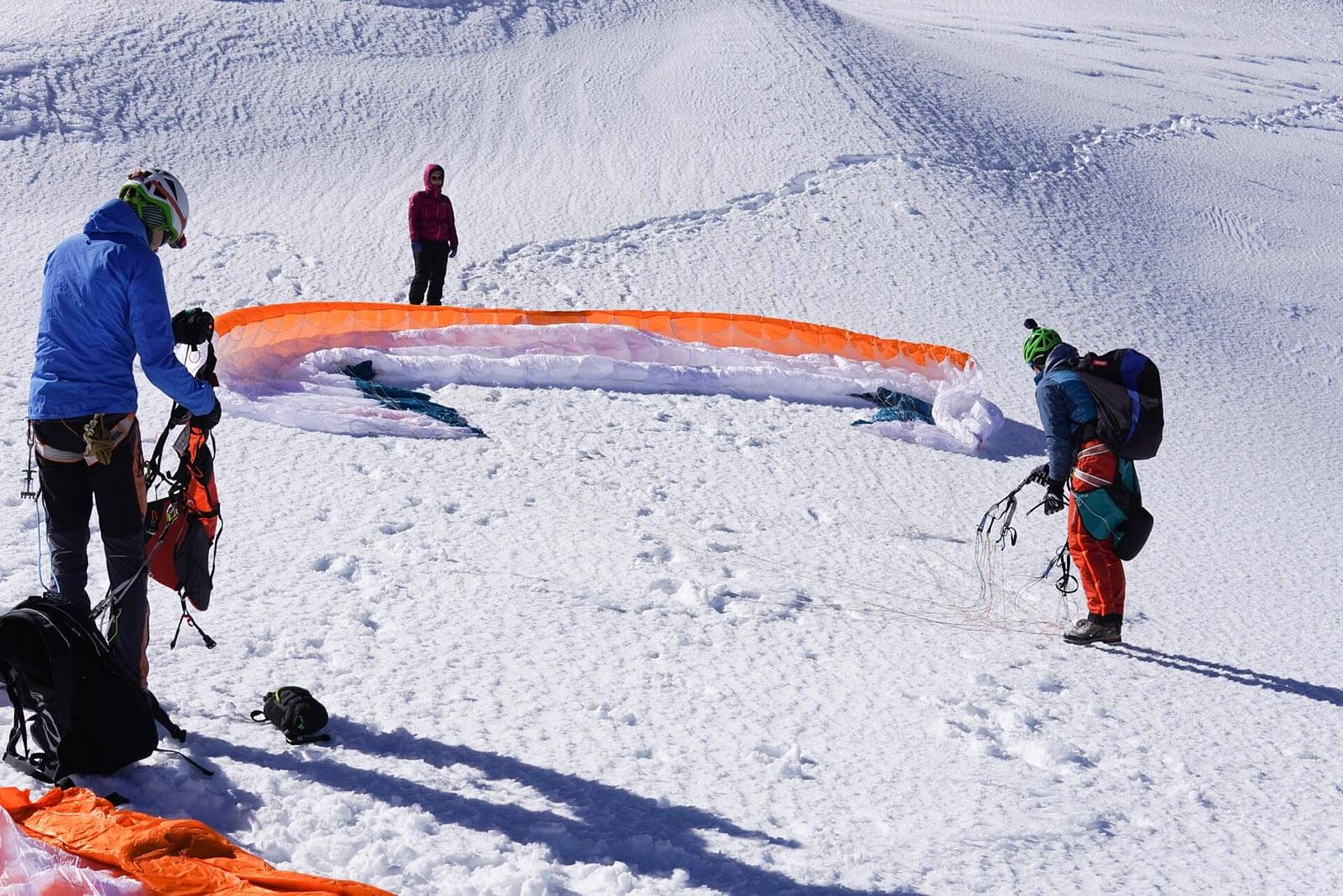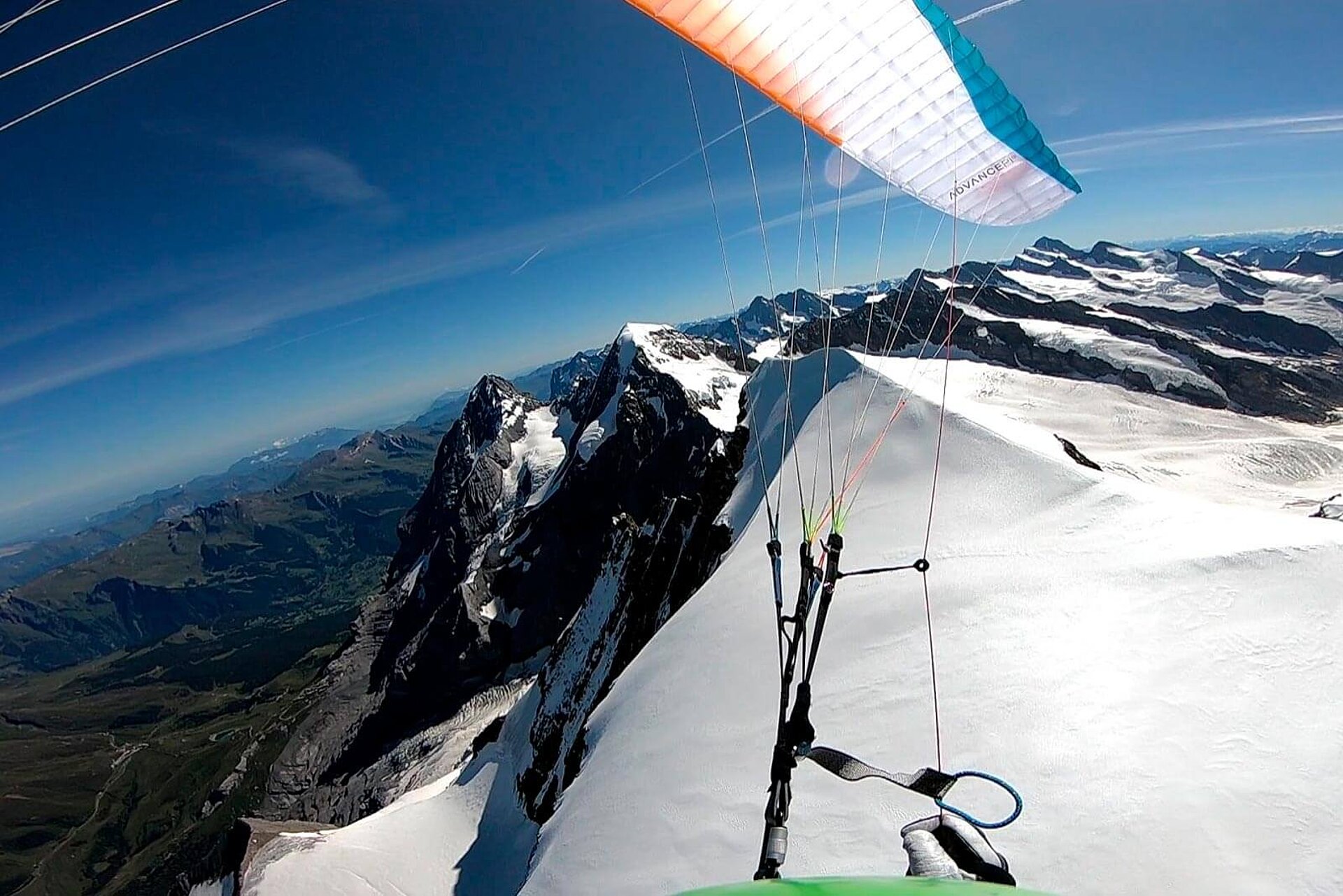To float from an icy mountain top down to the valley: this is the dream of mountaineers and pilots alike. There is only one way to find the answer to the nervous question of wind at the top: will it also suit the tandem? A diverse group of six pilots and mountaineers set out to climb the 4,158 metre high Jungfrau in Switzerland. Four paragliders lifted off from the summit and six beaming faces landed an hour later in Interlaken, the heart of the Berner Oberland.
The Rottal hut perches high above Stechelberg. It normally takes a good five and a half hours to reach it, a timespan that is tedious: the rucksacks are heavy, loaded with all the mountaineering equipment. Those who climb to the Rottal hut usually have a particular goal in mind: the Jungfrau –highest peak of the world-famous Oberland trio of Eiger, Mönch and Jungfrau.

The most efficient route
The six-man team of Sepp Inniger, Nicola Heiniger, Jil Schmid, Joel Sigenthaler, Hanes Kämpf and Andrina Frutiger also have the Jungfrau in mind, and the crowning glory of the day will be the quickest way down. That's why they have paragliding equipment with them in addition to the general high altitude equipment. “For a long time I had the idea of not only taking off from the summit but also flying to the hut.” grins Nicola, “Since not all of the party fly paragliders, we had two PIBI light tandems and two solo gliders with us. We set off together at 1 pm in Interlaken and went by train to the takeoff place. Thanks to super evening thermals we were all able to fly up almost to the hut at 2,756 m - at the end there were only 300 meters of altitude difference to master instead of 1,800. Pretty cool!”
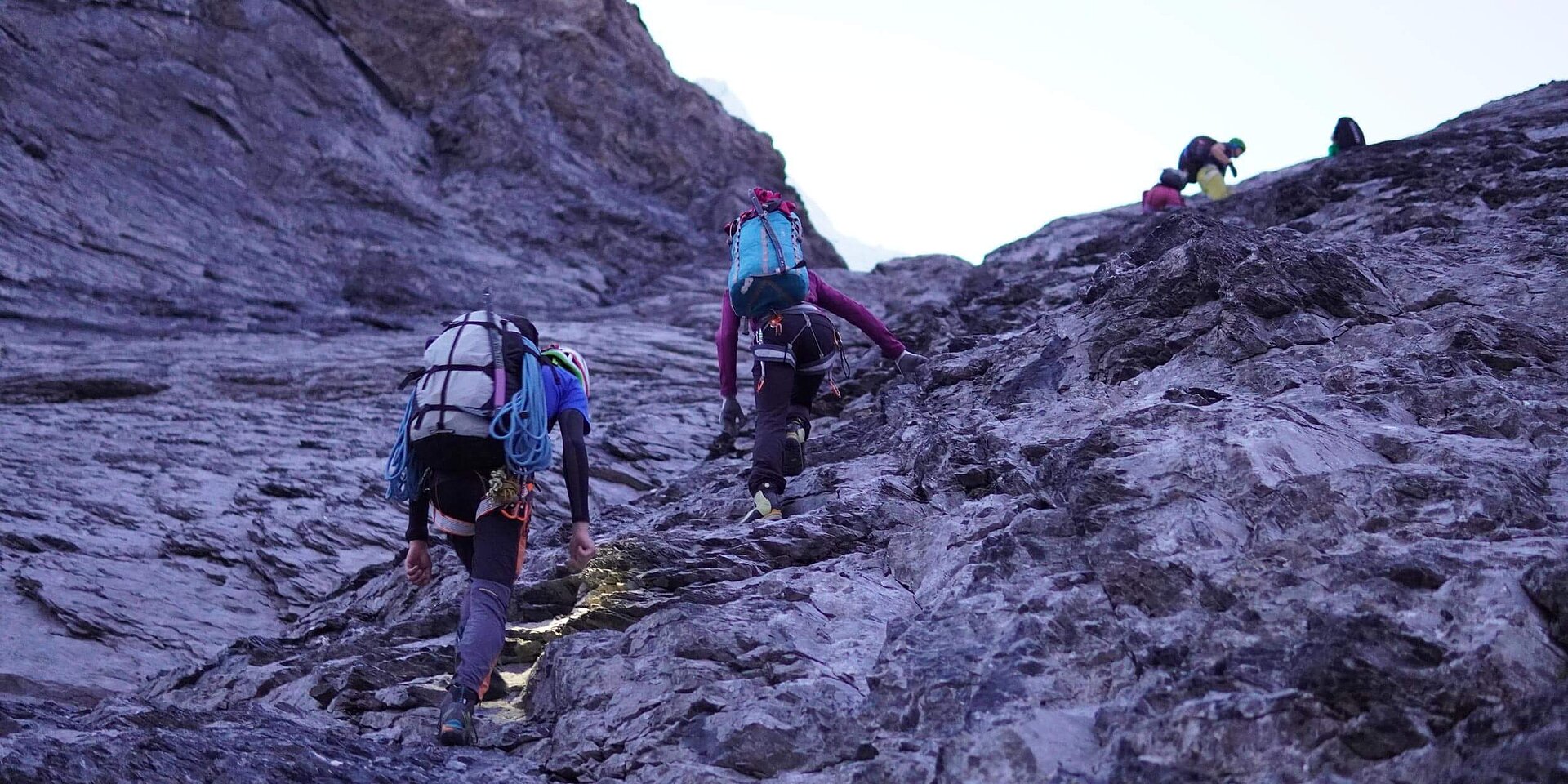
3 in the morning – the alarm rings
The Inner Rottal ridge is rated ZS/4a difficulty, and offers interesting, challenging climbing. It is often exposed, a head for heights is a must here. Icy sections alternate with rocky ones, which means a constant change between crampons and climbing boots. Most of the ridge is climbed on a rope, the most difficult passages are additionally secured with fixed ropes. An early start is essential for such a tour. “We had a great evening, but the night was very short. We started at four in the morning from the hut”, reports Nicola, “up to the summit there are 1,400 metres of altitude difference.”
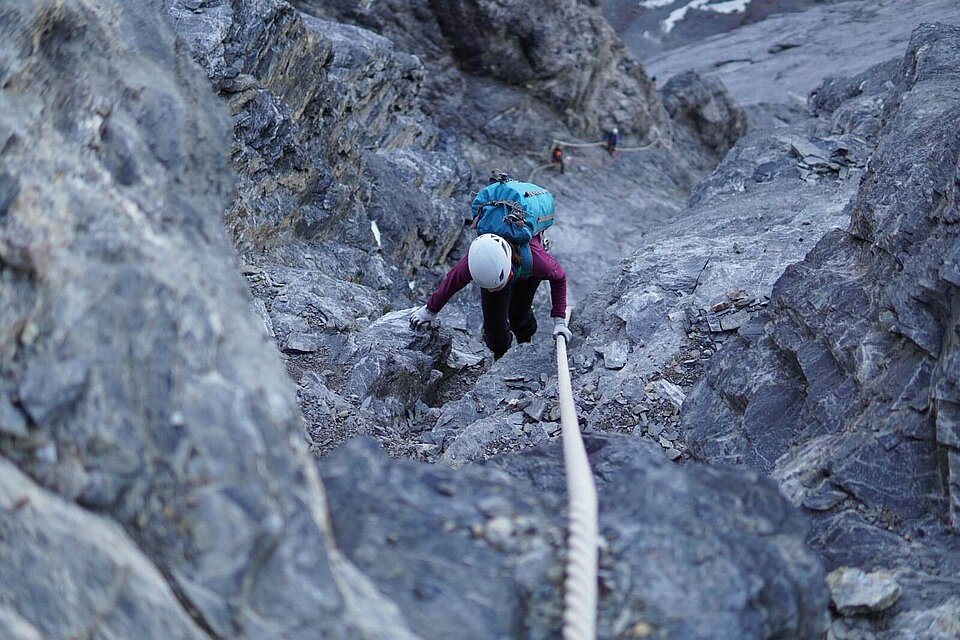


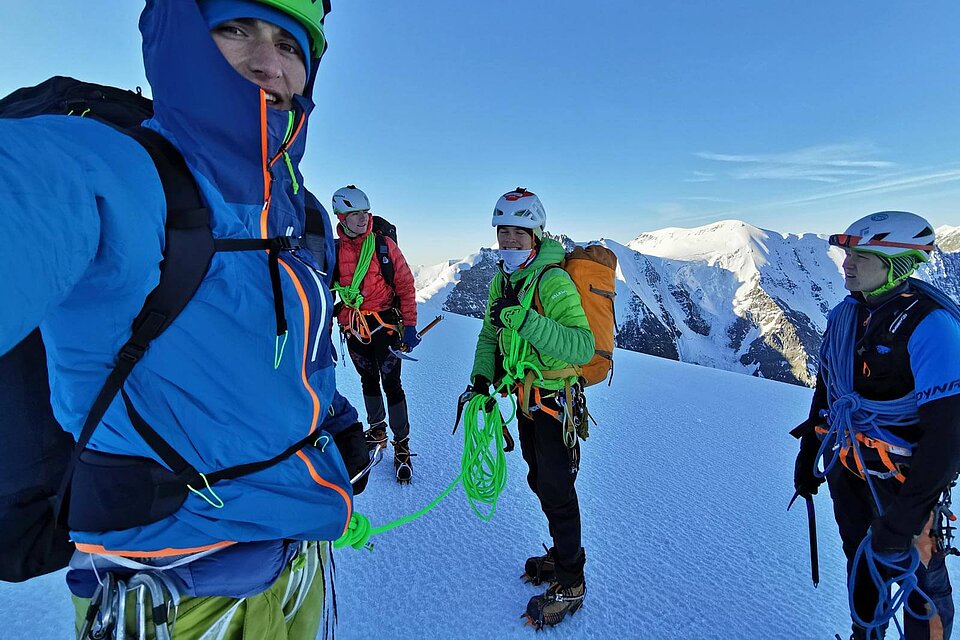
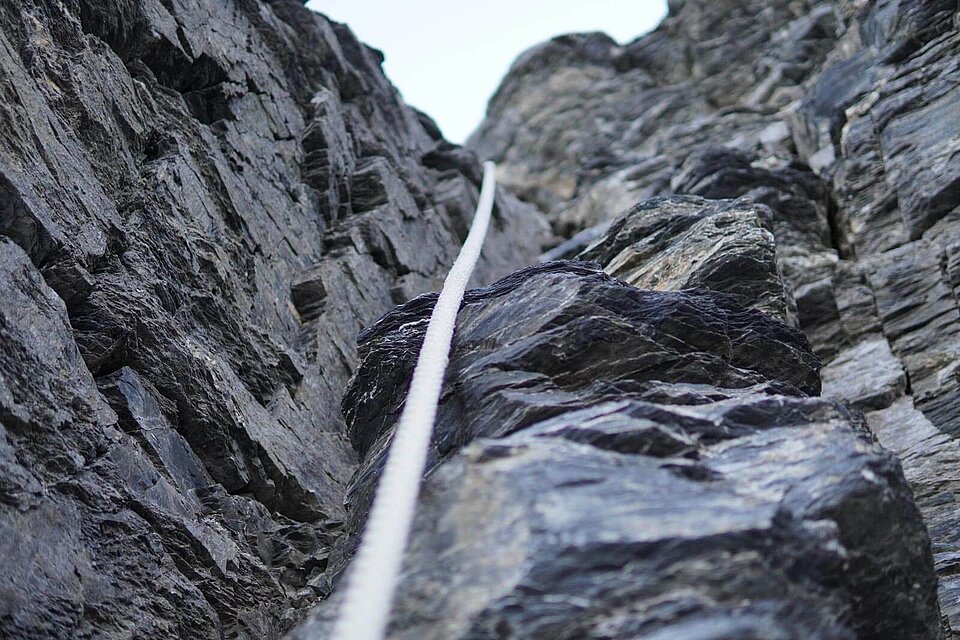
Into the sunlight
Step by step, we walk through the night, following the light of our headlamps. The first few metres are easy enough, then it gets harder and the team ropes up. Secure yourself rope length by rope length upwards. Sometimes crampons are necessary because of the icy passages, but most of the time the six climb in their hiking boots. Very slowly it gets brighter, the twilight of dawn sets in. The light of the headlamp is no longer needed, and early rising is rewarded with a beautiful sunrise. “When it slowly becomes day and the sun rises, that is always a very special moment for me,” says Sepp. The team makes good progress. It is not far to the summit and the day is still early. Will the wind allow us to take off at the top?
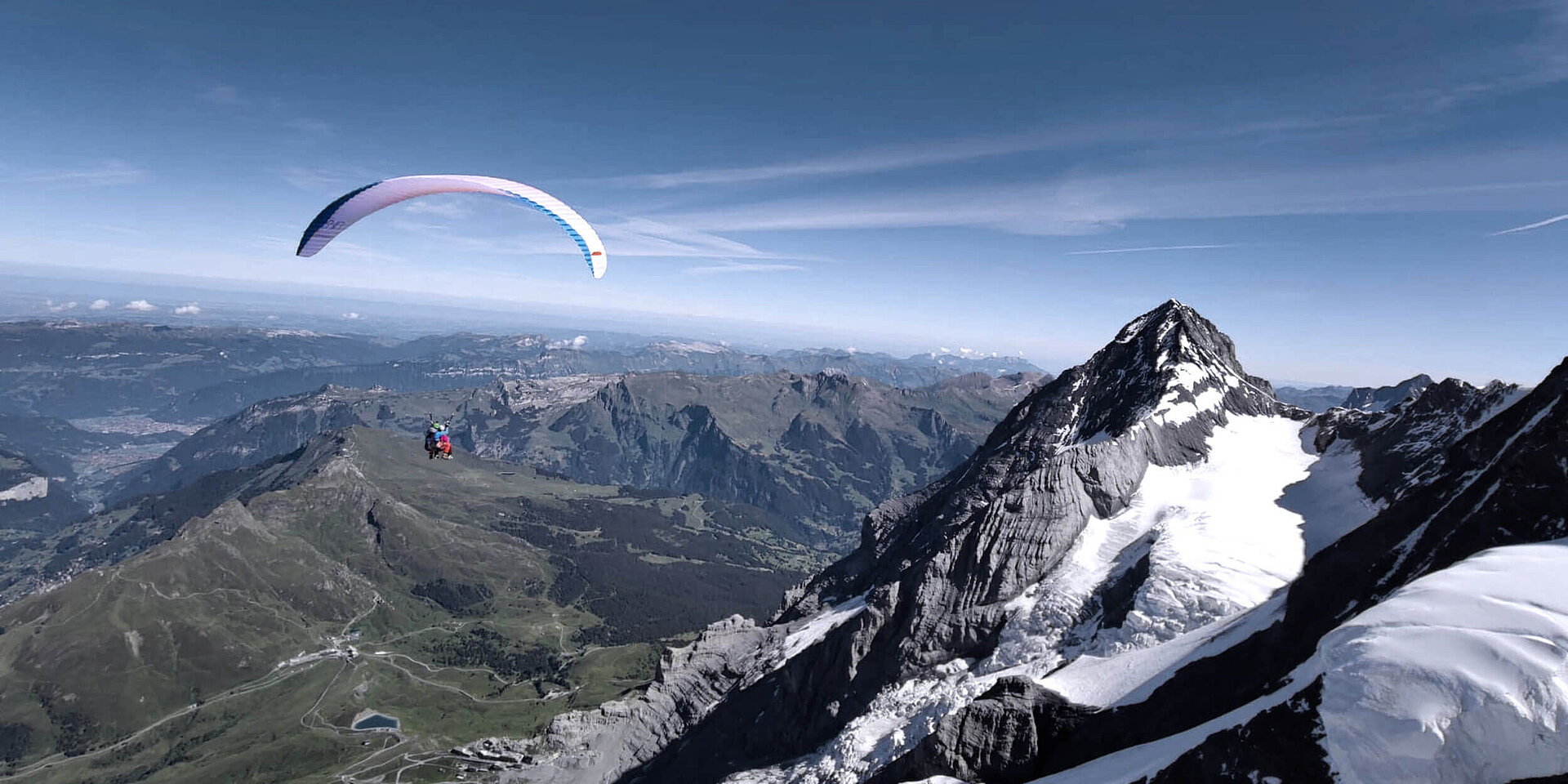
Over the Swiss Triumvirate
“The climbing was quite exhausting. But as we approached the summit, all the effort was forgotten. Being at the top is always something special,” reports Hanes. The team take off in the snow a few metres below the summit - the wind is coming up this morning, perfect takeoff conditions for the tandem as well. Early in the morning they can soar along the summit and then fly towards Interlaken in front of the north face of the Mönch. A mere hour after the six took off, they land in Interlaken; in the middle of the city on a green meadow. It seems only a moment ago they stood high up in the snow, and now it’s back to civilisation. Every mountaineer's dream: gliding down into the valley easily and smoothly after a wonderful summit success. Save yourself the tiresome descent. “When you can share such experiences with good friends, it's even more fantastic,” enthuses Sepp.
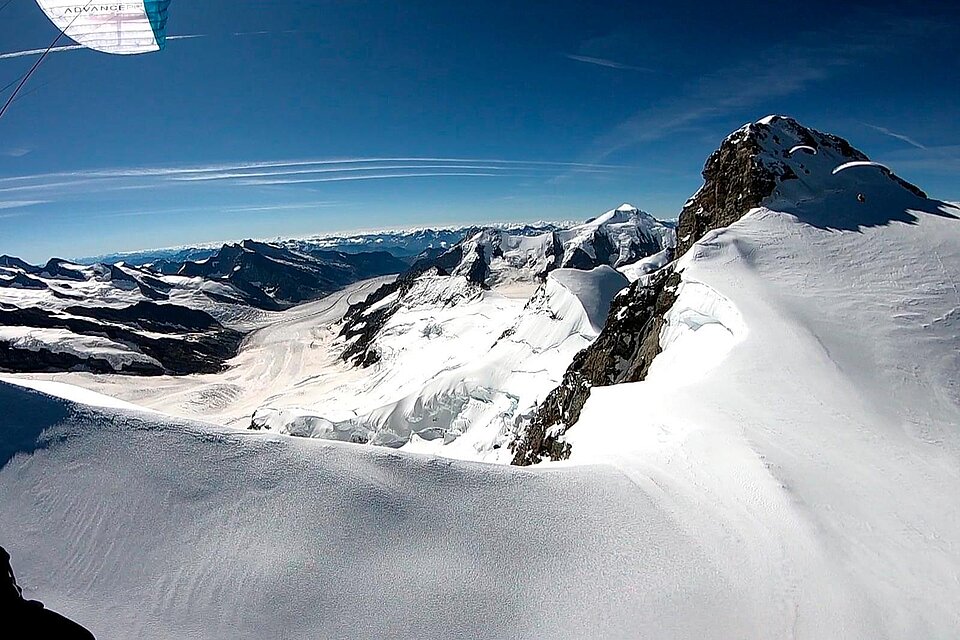
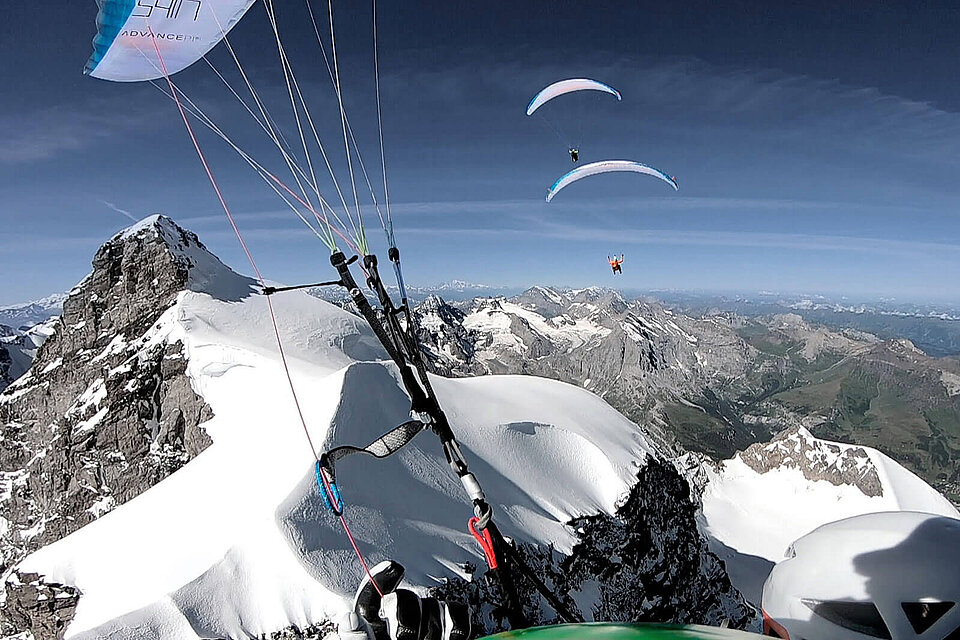
The Equipment
The Team

Sepp Inninger
Sepp is an ambitious mountaineer and paraglider pilot. He was Patrick von Känel’s supporter in the X-Alps 2019. Only a few weeks later he stood together with Patrick and Chrigel Maurer on the winners’ podium for the Eiger-Challenge in Grindelwald.
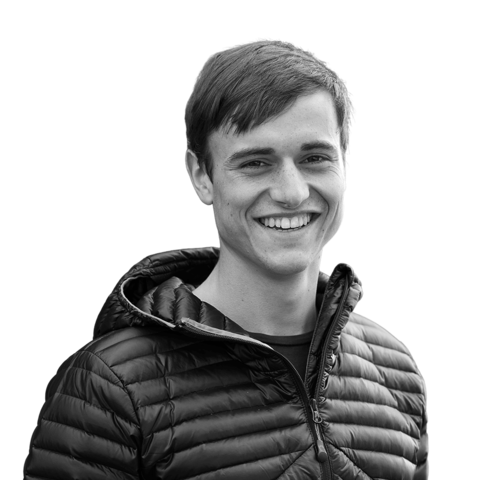
Hanes Kämpf

Nicola Heiniger
Nicola Heiniger is one of the rising stars of the scene. He regularly takes part in competitions and achieves podium finishes.


